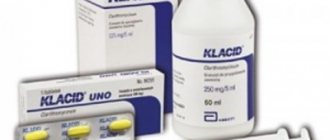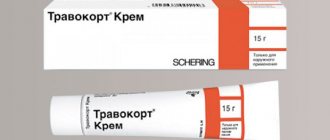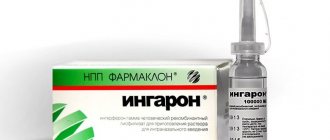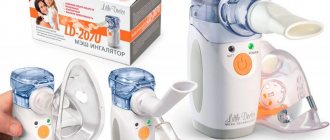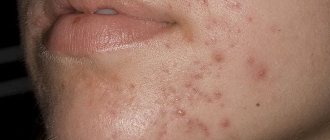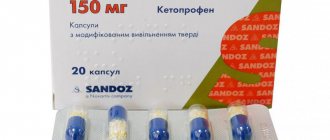Write a review
Reviews: 0
Manufacturers: Borshchagovsky Chemical and Pharmaceutical Plant
Active ingredients
- Cefuroxime
Disease class
- Bacterial meningitis, not elsewhere classified
- Pneumonia without specifying the pathogen
- Pyothorax
- Skin abscess, boil and carbuncle
- Peritonitis
- Disease of the digestive system, unspecified
- Urinary tract infection without established localization
- Inflammatory disease of the uterus, other than the cervix
Clinical and pharmacological group
- Not indicated. See instructions
Pharmacological action
- Broad spectrum antibacterial action
- Bactericidal
Pharmacological group
- Cephalosporins
Pharmacological properties of the drug Cefuroxime
II generation cephalosporin antibiotic for parenteral use. It has a bactericidal effect and disrupts the synthesis of the cell wall of microorganisms. Has a wide spectrum of activity. Resistant to most β-lactamases. Highly active against Staphylococcus aureus , including strains resistant to penicillins (except for rare strains resistant to methicillin), Staphylococcus epidermidis, Haemophilus influenzae, Klebsiella spp., Enterobacter spp., Streptococcus pyogenes, Escherichia coli, Streptococcus mitis ( viridans ), Clostridium spp., Proteus mirabilis, Proteus rettgeri, Salmonella typhi, S. typhimurium and other species of Salmonella spp., Shigella spp., Neisseria spp. (including β-lactamase-producing strains of N. gonorrhoeae ) and Bordetella pertussis . Cefuroxime is also moderately active against strains of P. vulgaris, P. morganii . Most strains of Bacteroides fragilis are not susceptible to cefuroxime. Inactive against Pseudomonas, Campilobacter, Acinetobacter calcoaceticus , most strains of Serratia, Clostridium difficile . The maximum concentration in blood plasma after oral administration is reached after 2–3 hours. About 50% of cefuroxime is bound to blood plasma proteins. Cefuroxime is not metabolized in the body and is excreted in the urine by glomerular filtration and tubular secretion. With simultaneous use of probenecid, the AUC increases by 50%. With intramuscular administration of cefuroxime, the maximum plasma concentration is achieved 30–45 minutes after injection. The half-life for both IM and IV administration is approximately 70 minutes. Cefuroxime is excreted unchanged in the urine. Penetrates through the BBB.
Pharmacokinetics
Parenteral administration
After intramuscular administration of 750 mg, Cmax is reached within 15-60 minutes and is 27 mcg/ml. With intravenous administration of 0.75 and 1.5 g, Cmax after 15 minutes is 50 and 100 mcg/ml, respectively. The therapeutic concentration lasts 5.3 and 8 hours, respectively. T1/2 with IV and IM administration is 1.3-1.5 hours, in newborns - 2-2.5 hours. Communication with plasma proteins is 33-50%. Not metabolized in the liver. Excreted by the kidneys by glomerular filtration and tubular secretion 85-90% unchanged within 8 hours (most of the drug is excreted within the first 6 hours, creating high concentrations in the urine); after 24 hours it is completely excreted (50% by tubular secretion, 50% by glomerular filtration). Therapeutic concentrations are recorded in pleural fluid, bile, sputum, myocardium, skin and soft tissues. Concentrations of cefuroxime exceeding the MIC for most microorganisms can be achieved in bone tissue, synovial and intraocular fluids. In meningitis it penetrates the blood-brain barrier. Passes through the placenta and enters breast milk.
Oral administration
It is well absorbed and quickly hydrolyzed in the intestinal mucosa and distributed in the extracellular fluid. Bioavailability after meals increases (up to 37-52%). Cmax in plasma is created after using tablets after 2.5-3 hours, suspension - 2.5-3.5 hours, T1 / 2 - 1.2-1.3 and 1.4-1.9 hours, respectively. It is excreted unchanged by the kidneys: in adults, 50% of the dose - after 12 hours. If renal function is impaired, T1/2 lengthens.
Indications for use of the drug Cefuroxime
Infectious and inflammatory diseases caused by microorganisms sensitive to cefuroxime: respiratory tract infections - acute and chronic bronchitis, bronchiectasis, bacterial pneumonia, lung abscess, pleural empyema, postoperative chest infections; infections of the ear, nose and throat - sinusitis, tonsillitis, pharyngitis; urinary tract infections - acute and chronic pyelonephritis, cystitis, asymptomatic bacteriuria; soft tissue infections - cellulitis, erysipelas, wound infections; infections of bones and joints: osteomyelitis, septic arthritis; infections in gynecology and obstetrics (inflammatory diseases of the pelvic organs); gonorrhea (especially with hypersensitivity to penicillin antibacterial agents); other infections, including peritonitis, septicemia and meningitis; prevention of infections during operations on the abdominal organs, pelvic organs, orthopedic operations, operations on the heart, lungs, esophagus and blood vessels, with an increased risk of infections.
Use of the drug Cefuroxime
Orally, adults are usually prescribed 0.25 g of cefuroxime (in the form of axetil) 2 times a day. If necessary, the dose of cefuroxime can be increased to 0.5 g 2 times a day. For the treatment of uncomplicated gonorrhea, a single dose of 1 g is sufficient. Take after meals. Children are prescribed 0.125 g 2 times a day. For otitis media, children over 2 years of age are recommended to be prescribed 0.25 g 2 times a day. The average duration of treatment with cefuroxime is 7 days. The maximum daily dose of cefuroxime for elderly patients and patients with impaired renal excretory function, including those on hemodialysis, is 1 g. IM or IV adults are prescribed 750 mg (up to 1.5 g) 3 times a day . If necessary, the interval between injections can be reduced to 6 hours, the daily dose of cefuroxime is 3–6 g. The dose of cefuroxime for children is 30–100 mg/kg per day in 3–4 administrations. For the treatment of most infections, the optimal daily dose is 60 mg/kg. Newborns are prescribed a daily dose of 30–100 mg/kg in 2–3 administrations. In the first weeks of life, the half-life of cefuroxime in newborns can be 3-5 times longer than in adults. For gonorrhea, 1.5 g of cefuroxime is prescribed once as one injection or as two injections of 750 mg (injected into the gluteal muscle on both sides). For meningitis, infants and older children are prescribed IV 200–400 mg/kg per day in 3–4 administrations. When the optimal therapeutic effect is achieved, the dose of cefuroxime can be reduced to 100 mg/kg per day IV. Newborns are prescribed IV at an initial dose of 100 mg/kg per day. When the optimal therapeutic effect is achieved, the dose can be reduced to 50 mg/kg per day IV. Adults are prescribed 3 g IV every 8 hours. For prophylactic purposes, an average dose of 1.5 g IV is prescribed before induction of anesthesia for abdominal, urological and orthopedic operations. If necessary, this dose can be supplemented with two further injections of cefuroxime 750 mg IM after 7 and 16 hours. For operations on the heart, lungs, esophagus and blood vessels, 1.5 g is administered IV at the time of induction anesthesia, then 750 mg is administered 3 times daily for the next 24–48 hours. For orthopedic surgery for total joint replacement, cefuroxime can be mixed dry with the contents of each methyl methacrylate cement polymer packet before adding the liquid monomer. In patients with impaired renal function with a creatinine clearance of 10–20 ml/min, it is recommended to administer the drug 750 mg once a day. For patients on dialysis, an additional 750 mg of cefuroxime is administered at the end of each procedure. For continuous peritoneal dialysis, cefuroxime is prescribed 750 mg 2 times a day.
Similar drugs:
- Augmentin Oral tablets
- Tea tree DN Ointment for external use
- Augmentin Powder for suspension for oral administration
- Bactrim Oral suspension
- Dioxydin Mouth rinse solution
- Pancef Oral tablets
- Nifuroxazide (Nifuroxazide) Oral tablets
- Cifran OD Oral tablets
- Pancef Granules for the preparation of suspension for oral administration
- Augmentin ES Powder for oral solution
** The Drug Directory is intended for informational purposes only. For more complete information, please refer to the manufacturer's instructions. Do not self-medicate; Before starting to use the drug Cefuroxime-BHFZ, you should consult a doctor. EUROLAB is not responsible for the consequences caused by the use of information posted on the portal. Any information on the site does not replace medical advice and cannot serve as a guarantee of the positive effect of the drug.
Are you interested in the drug Cefuroxime-BHFZ? Do you want to know more detailed information or do you need a doctor's examination? Or do you need an inspection? You can make an appointment with a doctor - the Euro lab is always at your service! The best doctors will examine you, advise you, provide the necessary assistance and make a diagnosis. You can also call a doctor at home . Euro lab clinic is open for you around the clock.
** Attention! The information presented in this medication guide is intended for medical professionals and should not be used as a basis for self-medication. The description of the drug Cefuroxime-BCPZ is provided for informational purposes only and is not intended for prescribing treatment without the participation of a physician. Patients need to consult a specialist!
If you are interested in any other drugs and medications, their descriptions and instructions for use, information about the composition and form of release, indications for use and side effects, methods of use, prices and reviews of drugs, or you have any other questions and suggestions - write to us, we will definitely try to help you.
Side effects of the drug Cefuroxime
Allergic reactions are possible, manifested by skin rash, itching, urticaria, fever, interstitial nephritis and very rarely - anaphylaxis; occasionally polymorphic erythema, Stevens-Johnson syndrome, toxic epidermal necrolysis, candidiasis with long-term use are observed, extremely rarely - pseudomembranous colitis, decreased hemoglobin levels, eosinophilia, leukopenia, neutropenia and thrombocytopenia, positive Coombs test, hemolytic anemia, transient increases in liver enzymes and bilirubin in blood serum.
special instructions
Patients with a history of allergic reactions to penicillins may have hypersensitivity to cephalosporin antibiotics. During treatment, monitoring of renal function is necessary, especially in patients receiving the drug in high doses. Treatment is continued for 48-72 hours after symptoms disappear, in case of infections caused by Streptococcus pyogenes
, the course of treatment is at least 7-10 days. During treatment, a false-positive direct Coombs test and a false-positive urine test for glucose are possible. The ready-to-use solution can be stored at room temperature for 7 hours, in the refrigerator for 48 hours. It is allowed to use a solution that has turned yellow during storage. In patients receiving cefuroxime, it is recommended to use glucose oxidase or hexokinase tests when determining blood glucose concentrations. When switching from parenteral administration to oral administration, the severity of the infection, the sensitivity of microorganisms and the general condition of the patient should be taken into account. If no improvement is observed 72 hours after taking cefuroxime orally, parenteral administration should be continued.
Drug interactions Cefuroxime
When used simultaneously with potentially nephrotoxic drugs (aminoglycosides) and potent diuretics (ethacrynic acid, furosemide), with colistin and polymyxin, the risk of developing renal failure increases; when used simultaneously with erythromycin, the effectiveness of both antibiotics may decrease; when combined with phenylbuzatone and probenecid, a decrease in the renal clearance of cefuroxime and an increase in its concentration in the blood serum is possible. Cefuroxime should not be mixed with aminoglycosides in the same volume.


